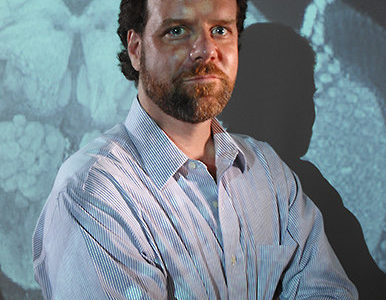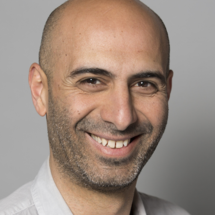FRAXA Research Foundation has awarded a $90,000 grant to Principal Investigator Dr. Sean McBride and Postdoctoral Fellow Dr. Karen Joyce, at Rowan University, to screen all 2,320 FDA-approved drugs on both mouse and fly models of Fragile X syndrome. Those drugs which show promise will be tested in more detail for potential to treat Fragile X in humans.
Read morefruit fly
Fragile X Fruit Fly Research Bears Fruit

A new FRAXA-funded study shows how the hormone insulin – usually associated with diabetes — is involved in the daily activity patterns and learning deficits in the fruit fly model of Fragile X Syndrome (FXS). The study also reveal a metabolic pathway that can be targeted by new and already approved drugs to treat Fragile X patients, notably metformin.
Read moreFruit Flies to Model and Test Fragile X Treatments

Dr. Jongens and his collaborators have found an insulin-like protein in the fly brain that is overexpressed in the Fragile X mutant fly, leading to increased activity of the insulin signaling pathway. Furthermore, they found that certain behavioral patterns in the Fragile X flies can be rescued by expressing the FX gene just in insulin producing neurons in the fly brain. In the mutant, there are other changes in the signaling pathways, including a decrease in cAMP and elevation in PI3K, mTOR, Akt and ERK activity. They now propose to study 2 medicines used for diabetes: pioglitazone (increases cAMP and decreases Akt and ERK) and metformin (inhibits mTOR), in flies and mice to validate the potential efficacy of these novel therapeutics for Fragile X.
Read moreMatrix Metalloproteinase Therapeutic Treatments for Fragile X Syndrome

With a $157,000 grant from the FRAXA Research Foundation in 2012-2013, Dr. Kendal Broadie and Dr. Cheryl Gatto worked to define the distinct but also overlapping roles for MMP-1 and MMP-2 in synaptic structural and functional development. In drug studies with Fragile X fruit flies, they will be testing a range of MMPIs in drug treatments to compare effectiveness during development and at maturity, in order to define the contributions of FXS developmental impairments and adult recovery/plasticity.
Read moreEfficient Screening for Pharmaceutical Amelioration of FXS Behavioral Deficits in Drosophila

With a $112,250 grant from FRAXA Research Foundation over 3 years, Dr. Efthimios Skoulakis and his team from the Institute of Cellular and Developmental Biology conducted the first FRAXA project in Greece, where they developed a speedy new test for learning problems in fruit flies, which allowed them to test a number of drugs that are potential Fragile X treatments.
Read moreDeveloping Fragile X Treatments in Fruit Flies and Mice

With a $380,000 grant from FRAXA Research Foundation from 2005-2009, Drs. Sean McBride, Tom Jogens, and Catherine Choi studied one of the most important aspects of FRAXA’s research; the preclinical validation of potential therapeutic strategies. Many labs have found new leads for treatment. However, very few have the capacity to test new drugs in the mouse model to establish efficacy rigorously enough to lead to clinical trials. The McBride lab (in a broad collaboration with the Choi, Jongens, and Skoulakis groups) aims to do just that. Results published.
Read moreNovel Functions of Drosophila FMRP

With a $120,000 grant from FRAXA Research Foundation over 2 years, Dr. Thomas Dockendorff from the University of Tennessee and his colleagues were pioneers in using the power of fly genetics to understand the different functions of the fly version of the Fragile X protein.
Read moreBasic Mechanisms of Disease and Potential Therapeutic Strategies

With $245,000 in grants from FRAXA Research Foundation, Dr. Stephen Warren and his lab at Emory University studied all aspects of Fragile X syndrome, from the mechanisms of repeat expansion to high-throughput drug screens in the Drosophila model of Fragile X. The Warren lab made the original discovery of the Fragile X gene, FMR1, in collaboration with the Nelson and Oostra labs, and is recognized internationally as a leader in molecular genetics. Recent projects include establishment of induced pluripotent stem cell lines from Fragile X patients, and determination of other forms of mutation in the Fragile X gene, other than the most common trinucleotide repeat expansion.
Read moreSleep and Circadian Rhythms in Fragile X Mutant Drosophila

With an $80,000 grant from FRAXA Research Foundation over 2 years, Dr. Ravi Allada and his team studied at Northwestern University sleep behaviors in Fragile X fruit flies. These fruit flies are useful for several important reasons; not only do they have a good cognitive phenotype, they also have a clear disturbance of circadian rhythms. This is an important model for human hyperactivity and sleep disorders, and this group studied the underlying mechanisms in an effort to find treatments for the human conditions.
Read moreMolecular Basis of Fragile X Syndrome: Genetic Modeling in Zebrafish

With a $52,500 grant from FRAXA Research Foundation in 2008, Dr. Robert Richards and his team from the University of Adelaide studied zebrafish models and embryo development abnormalities to search for treatment targets.
Read moreDefining Functional Domains of FMRP and Uncovering its Partners via Large Scale Mutagenesis in Drosophila

With $80,000 in funding from FRAXA Research Foundation in 2005 and in 2006, Dr. Yong Zhang and his team at the Chinese Academy of Sciences developed a way to find genes that suppress the Fragile X gene. FRAXA grants $40,000 (2006) and $40,000 (2005) by Xinda Lin show that FMRP is a widely expressed RNA-binding protein involved in RNA transport and translation. Intensive studies in the last decade have demonstrated that FMRP contains four RNA binding domains, but their actual functions are mostly untested. Meanwhile, a dozen or so protein partners and hundreds of mRNA targets interacting with FMRP have been identified, but again their functions are poorly understood.
Read moreDrosophila CYFIP, a Molecular Link Between Actin Cytoskeleton Remodeling and Fragile X

With $130,000 in funding from FRAXA Research Foundationfrom 2004-2006, Dr. Angela Giangrande at the Universite Louis Pasteur investigated the interactions between dendrites, messenger mRNA, and the cytoskeleton in fruit flies, which are a simple yet powerful system in which multiple genes can be manipulated with relative ease.
Read moreGenetic and Behavioral Analyses of the dFMR1 Pathway in Drosophila Peripheral Nervous System

With a $160,000 grant from FRAXA Research Foundation from 2004-2006, Dr. Fen-Biao Gao and his team at the University of California studied the relationship between mRNA and FMRP.
Read morePharmacologic Interventions in the Fmr1 KO Mouse

With $48,600 in grants from FRAXA Research Foundation over 2004-2006, Dr. Catherine Choi at Drexel University studied Fragile X knockout mice to determine future treatment targets for Fragile X syndrome in humans.
Read moreFruit Fly Helps Reveal the Secrets of Fragile X

With a $50,000 grant from FRAXA Research Foundation from 2003-2004, Dr. Bassem Hassan and his team at Flanders University researched how Fragile X fruit flies can help further future studies for Fragile X treatment research.
Read moreDendritic Spine Formation and Fragile X

With a $35,000 grant from FRAXA Research Foundation in 2003, Dr. Jay Brenman and his team at the University of North Carolina utilized the fruit fly (Drosophila) to model disease and examined the fly model of Fragile X in an effort to understand the basic mechanisms of disease.
Read moreDFXR and Synaptic Tagging in Drosophila (Fruit Flies)

With a $135,000 grant from FRAXA Research Foundation from 2001-2003, Dr. Jerry Yin and his team at the University of Wisconsin researched memory formation in Fragile X fruit flies. Dr. Yin started his Fragile X studies at Cold Spring Harbor Laboratory before moving to the Waisman Center.
Read moreUnderstanding the Function of Fragile X Protein in Drosophila

With a $105,000 grant from FRAXA Research Foundation from 2000-2003, Drs. Haruhiko Siomi and Mikko Siomi at Tokushima University researched approaches to characterize the Drosophila homolog of FMR1 and its associated molecules, and to identify molecular pathways that are involved in the cellular processes which are affected by the loss-of-function of Drosophila FMR1.
Read moreA Genetic Screen For Dominant Modifiers of Drosophila (Fruitfly) FMR

With a $35,000 grant from FRAXA Research Foundation in 2002, Dr. Kevin Moses and his team at Emory University studied fruit fly eye phenotypes to screen for genes that function in the Fragile X pathway.
Read more
